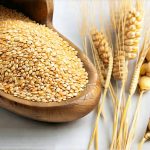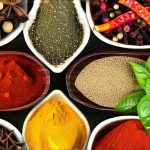The concept of ‘healthy’ eating is often presented as straightforward: choose whole grains, lean proteins, fruits, and vegetables – seemingly simple, yet increasingly complex when individuals experience persistent digestive discomfort despite diligently following these guidelines. We are bombarded with nutritional information, often leading to a paradoxical situation where well-intentioned dietary choices can inadvertently contribute to bloating, gas, abdominal pain, or altered bowel habits. This isn’t necessarily about ‘bad’ foods; it’s about individual sensitivities and the nuances of digestive physiology that aren’t always addressed in generalized healthy eating recommendations. What’s considered a cornerstone of health for one person might be a trigger for another, highlighting the need to move beyond blanket statements and embrace a more personalized approach to nutrition.
The digestive system is an incredibly intricate ecosystem, influenced by factors far exceeding just what we eat – stress levels, sleep quality, gut microbiome diversity, and even emotional state all play crucial roles. Focusing solely on food without considering these interconnected elements can lead to frustration when seemingly healthy diets fail to alleviate symptoms. This article explores some commonly perceived ‘healthy’ foods that may unexpectedly contribute to digestive issues for certain individuals, emphasizing the importance of mindful consumption and personalized dietary adjustments rather than restrictive elimination diets. It’s about understanding why these foods might cause problems and empowering you to identify potential triggers in your own diet, not demonizing entire food groups.
The Fiber Paradox: When ‘Healthy’ Backfires
Fiber is widely lauded for its health benefits – promoting regularity, supporting gut microbiome diversity, lowering cholesterol, and regulating blood sugar levels. However, an excess of fiber, or the wrong type of fiber, can be problematic for many people, especially those with pre-existing digestive conditions like Irritable Bowel Syndrome (IBS). The issue isn’t fiber itself, but rather how quickly it’s introduced and what kind is consumed. Suddenly increasing fiber intake without adequate hydration can lead to constipation, bloating, and discomfort.
Furthermore, different types of fiber affect people differently. – Soluble fiber (found in oats, apples, beans) absorbs water and forms a gel-like substance, slowing digestion. This is generally well-tolerated but can cause gas in some individuals. – Insoluble fiber (found in whole grains, vegetables) adds bulk to stool and promotes regularity. While beneficial for many, it can be irritating for those with sensitive digestive systems or conditions like diverticulitis. Some fibers – particularly FODMAPs discussed later – are poorly absorbed by the small intestine and fermented by bacteria in the large intestine, leading to gas production.
The key is gradual introduction of fiber-rich foods, coupled with sufficient water intake. Paying attention to your body’s response and adjusting accordingly is essential. It’s also helpful to explore different sources of fiber to identify which ones are best tolerated. For example, someone struggling with bloating from wheat bran might find oat bran or psyllium husk more agreeable. Focusing on whole food sources over processed fiber supplements is generally recommended, as they provide additional nutrients and phytonutrients. Understanding daily habits that disrupt digestion can also play a role in fiber tolerance.
The FODMAP Factor: Hidden Intolerances
FODMAPs (Fermentable Oligosaccharides, Disaccharides, Monosaccharides, And Polyols) are short-chain carbohydrates that are poorly absorbed in the small intestine. This means they travel to the large intestine where they’re fermented by gut bacteria, producing gas and potentially causing bloating, abdominal pain, diarrhea, or constipation – symptoms very similar to IBS. Many foods considered healthy are high in FODMAPs, making identification of these triggers challenging.
Foods commonly thought of as ‘healthy’ that contain significant amounts of FODMAPs include: – Apples & Pears (fructose) – Onions and Garlic (fructans) – Wheat and Rye products (fructans) – Legumes (galactans) – Milk and Yogurt (lactose, for those lactose intolerant) – even seemingly innocuous ‘health’ drinks like kombucha can contain high FODMAP levels. The challenge lies in the fact that many individuals are unaware of their sensitivity to these compounds. Identifying foods that trigger bloating is often the first step toward relief.
A low-FODMAP diet isn’t about long-term elimination; it’s a diagnostic tool. The process typically involves: 1. Elimination Phase: Removing high-FODMAP foods for 2–6 weeks. 2. Reintroduction Phase: Systematically reintroducing FODMAPs one at a time, carefully monitoring symptoms to identify specific triggers. 3. Personalization Phase: Developing a long-term dietary plan based on individual tolerances. This process is ideally guided by a registered dietitian specializing in gut health, as it requires careful planning and execution to ensure nutritional adequacy.
Gluten & Beyond: Sensitivity vs. Celiac Disease
Gluten, a protein found in wheat, barley, and rye, receives considerable attention due to its association with celiac disease and non-celiac gluten sensitivity (NCGS). Celiac disease is an autoimmune disorder triggered by gluten ingestion, causing damage to the small intestine. This requires strict, lifelong avoidance of gluten. NCGS, however, is a different phenomenon – individuals experience symptoms similar to celiac disease but without the intestinal damage or autoimmune response.
The challenge is that many digestive issues attributed to gluten may actually be caused by other components in wheat or related foods. For example, fructans (a FODMAP) are abundant in wheat and can cause bloating and gas in sensitive individuals, even if they don’t have celiac disease or NCGS. Additionally, amylase-trypsin inhibitors (ATIs), another component of wheat, have been implicated in gut inflammation in some studies. Therefore, a blanket elimination of gluten without proper investigation might not address the underlying cause of digestive issues.
A thorough evaluation by a healthcare professional is crucial to determine if symptoms are related to celiac disease, NCGS, or other factors. If gluten sensitivity is suspected, consider exploring alternative grains like rice, quinoa, oats (certified gluten-free), and buckwheat as potential replacements. However, simply switching to gluten-free products doesn’t automatically guarantee digestive relief; it’s essential to identify the specific trigger – whether it’s gluten itself, FODMAPs within wheat, or other components. Getting enough sleep can also help with digestive issues.
The Cruciferous Conundrum: Gas & Goitrogens
Cruciferous vegetables – broccoli, cauliflower, cabbage, Brussels sprouts – are nutritional powerhouses packed with vitamins, minerals, and antioxidants. However, they contain compounds called goitrogens that can interfere with thyroid hormone production, particularly in individuals with pre-existing thyroid conditions. More commonly, these vegetables are notorious for causing gas and bloating due to their high raffinose content, a type of FODMAP.
Raffinose isn’t easily digested by the human gut; instead, it reaches the large intestine where it’s fermented by bacteria, resulting in gas production. Cooking cruciferous vegetables can help break down some of the raffinose, making them more tolerable. However, for individuals with sensitive digestive systems, even cooked cruciferous vegetables may still cause discomfort.
Strategies to mitigate these effects include: – Portion Control: Start with small servings and gradually increase as tolerated. – Cooking Methods: Steaming or roasting can be less gas-producing than raw consumption. – Pairing: Combining cruciferous vegetables with carminatives (herbs like fennel, ginger, chamomile) may help reduce bloating. – Individual Tolerance: Recognizing that not everyone reacts the same way and adjusting intake accordingly is vital.
The ‘Health Bowl’ Headache: Overload & Combinations
The popular “health bowl” trend – combining grains, legumes, vegetables, seeds, and dressings – while seemingly virtuous, can inadvertently lead to digestive issues due to its sheer complexity. Combining a large number of ingredients in one meal places a significant burden on the digestive system, requiring it to work harder to break down and absorb nutrients. This is particularly true for individuals with compromised digestion or sensitivities.
Furthermore, certain food combinations are known to be more difficult to digest. For example, combining fruits with proteins can lead to fermentation in the gut, causing bloating and gas. Similarly, mixing large amounts of different fiber sources can overwhelm the digestive system. A more mindful approach is to simplify meals – focusing on fewer ingredients and allowing for adequate digestion between courses.
Consider: – Ingredient Limits: Aim for 3-5 main components per meal. – Food Combining Principles: While not universally accepted, exploring food combining strategies (separating fruits from proteins, etc.) may offer relief for some individuals. – Chewing Thoroughly: Breaking down food mechanically through thorough chewing aids digestion and reduces the workload on the intestines. Ultimately, listening to your body’s signals and adjusting meal composition accordingly is paramount to achieving digestive comfort. It’s important to understand that daily habits can also play a role in digestion. And, if you are struggling with discomfort, there are ways to find comfort foods.


















